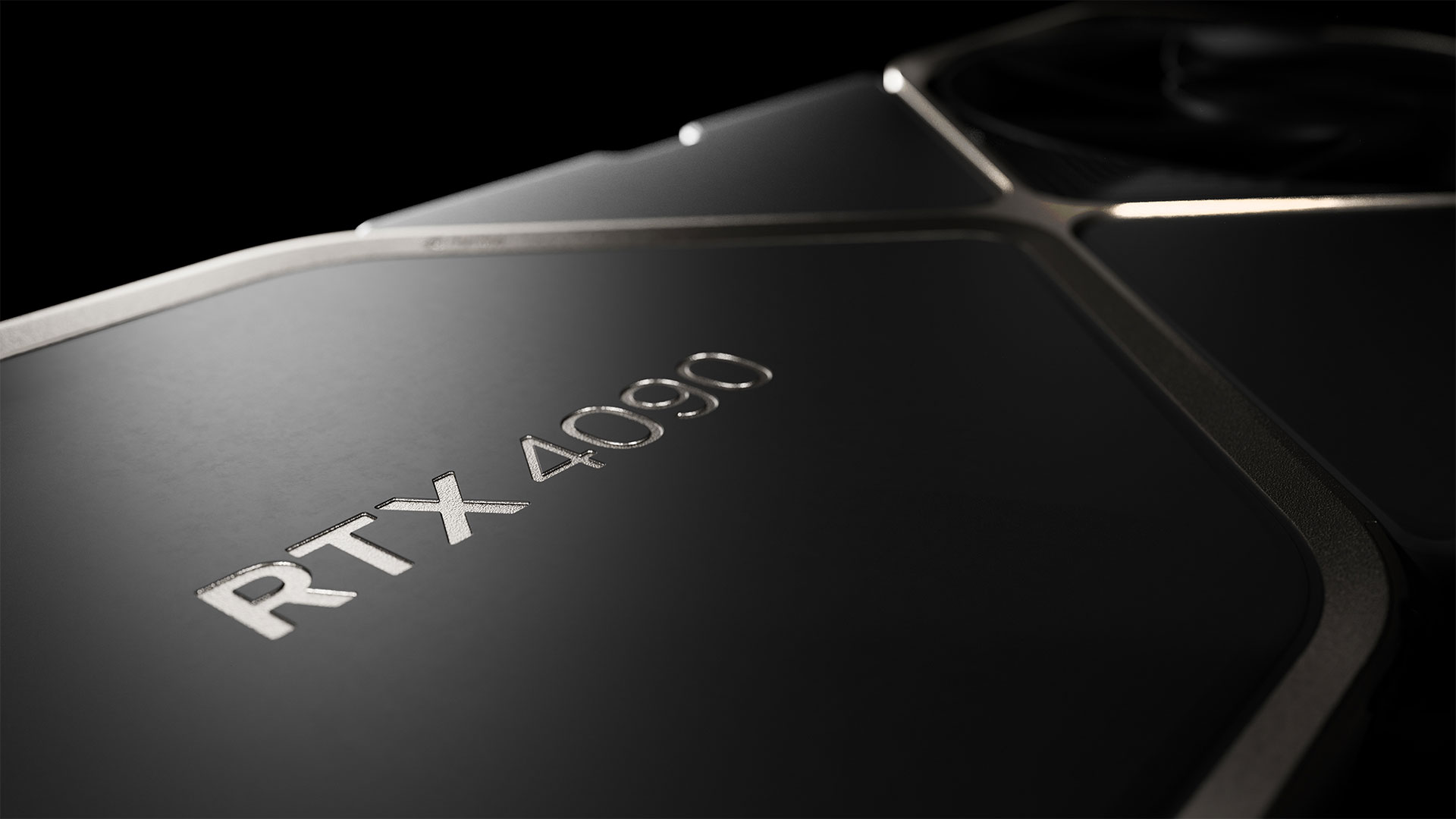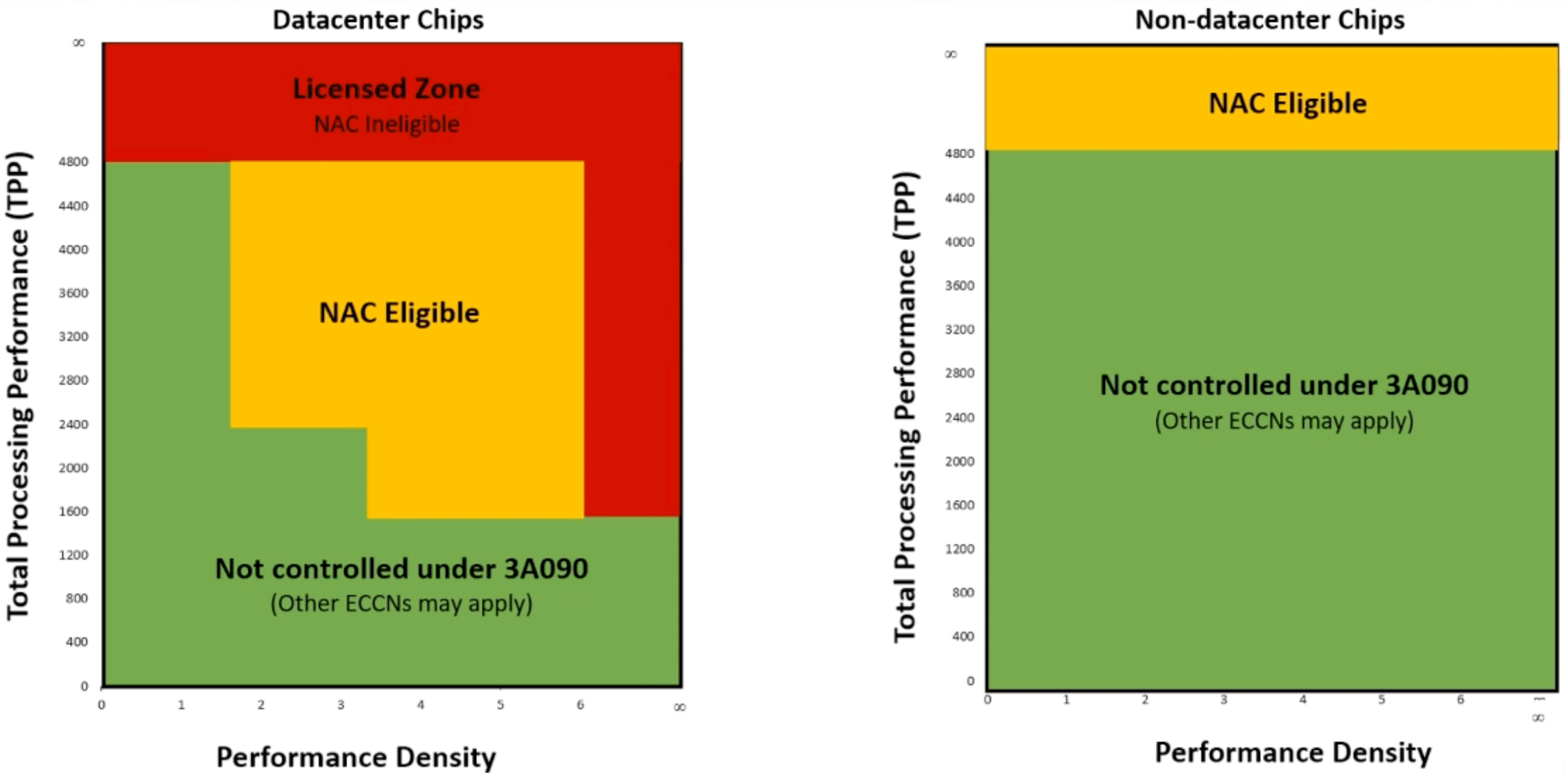Nvidia reportedly creating new RTX 4090 D 'Dragon' GPU to comply with US export regulations for China
The US' new export regulations prevent the Chinese from accessing Nvidia's outgoing RTX 4090.

Nvidia's best graphics card for gaming, the RTX 4090 was recently struck with an export ban preventing the GPU from being sold to China. In response, Nvidia is reportedly developing a China-exclusive variant dubbed the RTX 4090 D (for "Dragon") — that's according to WCCFTech. The RTX 4090 D will supposedly feature lower performance and specifications to comply with U.S. export regulations. Sprinkle liberally with salt, obviously, though the idea absolutely makes sense.
The rumored GPU's specifications are unknown, but due to the US export guidelines, the RTX 4090 D will need to be less powerful than its outgoing counterpart. As a result, we will likely see the 4090 D coming with a lower TDP and a lower SM/core count to separate itself from the RTX 4090. Given how big the performance gap is between the RTX 4080 and the RTX 4090, this neutered 4090 could be quite a bit slower than the outgoing part (if the RTX 4080 Super doesn't come out). In a worst-case scenario, it might not even come with the AD102 GPU die.
The main metric that the 4090 D will need to meet is TPP, Total Processing Power. This is calculated by the maximum compute for a given bit-depth, using TFLOPS (or TOPS for integer work) multiplied by the number of bits. For the RTX 4090, TPP is 660.8 * 8 = 5,286 for FP8 work running on the Tensor cores (sparsity doesn't count). Also note that the value is the same for FP16: 330.4 * 16 = 5,286. The allowed limit is 4,800, so the RTX 4090 is about 10% "too powerful."
This is why the RTX 4080 can still be sold (and manufactured / assembled) in China. It has a TPP of 389.6 * 8 = 3,117. There's a secondary metric for data center parts called Performance Density (TPP divided by die area), but that doesn't come into play for consumer GPUs. It's the reason the Nvidia L4 also falls under the restrictions, as it has a PD rating of 6.6, using the AD104's 294 mm^2 die size and a TPP value of 1,936. (It's a good thing PD doesn't apply to consumer products, as the entirety of Nvidia's desktop RTX 40-series has a PD above 6.0.)
So what would Nvidia need to do for an RTX 4090 D to be allowable under U.S. export controls? Technically, anything below 4,800 TPP would suffice, but Nvidia will likely build in some wiggle room — to ensure overclocking as an example doesn't become a problem. Assume a clock speed of 2.7 GHz and we get a maximum number of SMs of 108. That would still have a TPP score of 4,778, however, so Nvidia will likely be aiming a bit lower, like around 100 SMs (4,428 TPP), just to be safe.
Making a neutered RTX 4090 is a smart move from Nvidia, as the Chinese market is huge, with a total population over 4x greater than the United States. As a result, it's worth Nvidia's time and effort to create a high-end replacement for the Chinese market that is similarly priced, so it can reclaim the ultra-high-end GPU market — 7900 XTX cards are reportedly doing well in China right now.
According to WCCFTech, the RTX 4090 D will be available from add-in board partners in China, similar to the RTX 4090, with no indication of a Founders Edition model. Pricing is also reported to be "similar" to the RTX 4090's old price in China — i.e. before the restrictions caused prices to shoot up — though it may be a tad less expensive to reflect its lower performance.
The demise of the RTX 4090 and the rise of the RTX 4090 D is the result of the U.S. Commerce Departments recent attempts to deny China access to advanced technologies. The RTX 4090 is an unfortunate casualty of the recent bans, though given what we're now seeing with RTX 4090 cards being retrofitted with blower-style coolers, its understandable that even consumer parts may need restrictions.
The RTX 4090 D is one of several GPUs Nvidia is creating to comply with the U.S. regulations. Nvidia is also preparing several additional AI and HPC-focused GPUs that will comply with the United States' performance restrictions. The RTX 4090 D will reportedly launch in early 2024.
Get Tom's Hardware's best news and in-depth reviews, straight to your inbox.

Aaron Klotz is a contributing writer for Tom’s Hardware, covering news related to computer hardware such as CPUs, and graphics cards.
-
atomicWAR I totally get they want to address such a large market but it is getting a little bothersome Nvidia has tried to barely fly under the embargo radar again, again and again. It defeats their whole purpose IMHO.Reply
If you ask me the smart thing to do would be neuter the tensor cores severely. Leave just enough to allow for DLSS 3/3.5 to run but effectively kill it as a proper high powered AI card. I didn't feel like doing all the TPP math or I would offered a more complete potential 'spec sheet'. Regardless by lasering off a large portion of the tensor cores Nvidia should in theory be able to have a faster chip in raster and ray-tracing then would have been possible otherwise due to processing and silicon restraints required under the new embargos.
Please if someone more versed in the nuance of chip design would please chime in here I would be grateful! (glances at bit_user) I am sure their are a few routes Nvidia can take but the pricing is very Ngreedia like considering this will be a cut down chip. They always seem all to ready to go along with any scalper/pandemic/embargo pricing when releasing new products. Its really rather sad and unfortunate for gamers. You know the folks who built Nvidia up in the first place. At this point I almost wish Nvidia would spin off their gaming arm and focus on AI. Gamers and users deserve better.... -
bigdragon Dragons exist outside of China. They should name this card the 4090 P for Panda.Reply
I'm not understanding the need or desire to neuter the 4090 to make it legal. Just design and release a 4080 Ti that's legal for export. That should be in the performance realm the supposed 4090 D is targeting. -
-Fran- Reply
Killing their Tensor Cores kills the whole gimmick of "RTX" and it would go back to being just a "GTX" card.atomicWAR said:I totally get they want to address such a large market but it is getting a little bothersome Nvidia has tried to barely fly under the embargo radar again, again and again. It defeats their whole purpose IMHO.
If you ask me the smart thing to do would be neuter the tensor cores severely. Leave just enough to allow for DLSS 3/3.5 to run but effectively kill it as a proper high powered AI card. I didn't feel like doing all the TPP math or I would offered a more complete potential 'spec sheet'. Regardless by lasering off a large portion of the tensor cores Nvidia should in theory be able to have a faster chip in raster and ray-tracing then would have been possible otherwise due to processing and silicon restraints required under the new embargos.
Please if someone more versed in the nuance of chip design would please chime in here I would be grateful! (glances at bit_user) I am sure their are a few routes Nvidia can take but the pricing is very Ngreedia like considering this will be a cut down chip. They always seem all to ready to go along with any scalper/pandemic/embargo pricing when releasing new products. Its really rather sad and unfortunate for gamers. You know the folks who built Nvidia up in the first place. At this point I almost wish Nvidia would spin off their gaming arm and focus on AI. Gamers and users deserve better....
They can't sell you DLSS or RT or whatever else they are selling behind the Tensor Cores performance.
Regards. -
atomicWAR Reply
I only meant to make the big cuts to tensor not kill it all together. Make it closer to a RTX 4080 in tensor core count. And it shouldn't kill RTX as the RT cores are a different thing. The big thing it would affect is DLSS gains as far as I can tell looking over the architecture.-Fran- said:Killing their Tensor Cores kills the whole gimmick of "RTX" and it would go back to being just a "GTX" card.
They can't sell you DLSS or RT or whatever else they are selling behind the Tensor Cores performance.
Regards. -
ilukey77 Isnt China chasing the 4090 for its AI related tasks ??Reply
We all know China's market is huge even more than the US is some cases !!
Really hammers home if Nvidia want to make more money the will build it .. ( or nerf it in this case ) -
who_farted so does this mean china's 5000 series could top out with a 5070 given the performance was there?Reply -
williamcll Reply
Maybe they'll bring back the GTX serieswho_farted said:so does this mean china's 5000 series could top out with a 5070 given the performance was there? -
Joseph_138 Reply
Only if they accumulate enough defective dies with bad RT cores, like they did with RTX 20, resulting in GTX 16. Yields on those seem to have gone up dramatically enough with the RTX 30 cards, that it wasn't viable to do a GTX production run with them. I don't expect that there will ever be a GTX card based on the RTX 40 or 50 architectures, especially now that AMD can do raytracing, too. Nvidia could release GTX 16, when they did, because RX 5000 couldn't do raytracing at all. A card that can't do raytracing at all, is going to be tough to sell now.williamcll said:Maybe they'll bring back the GTX series
